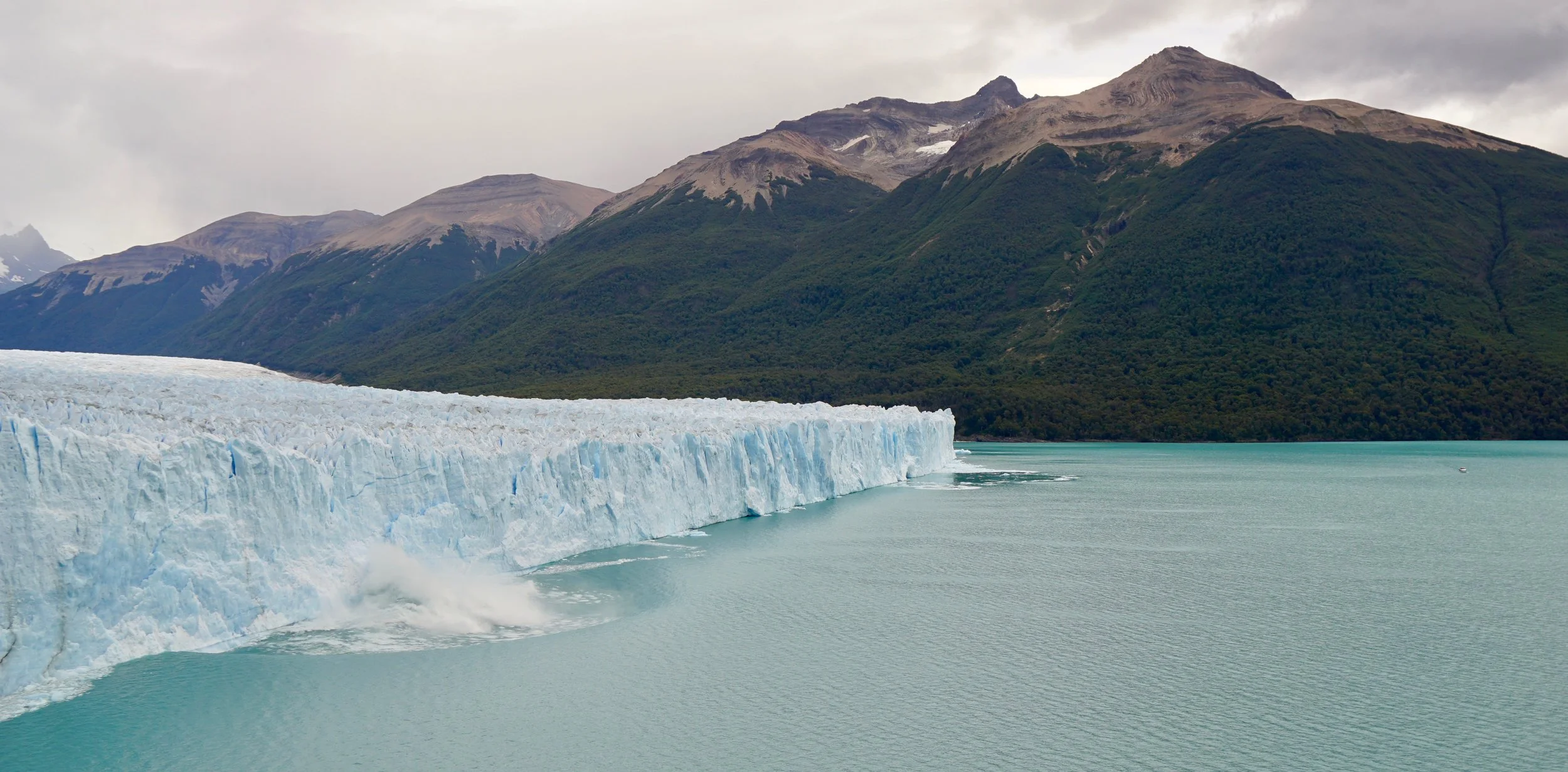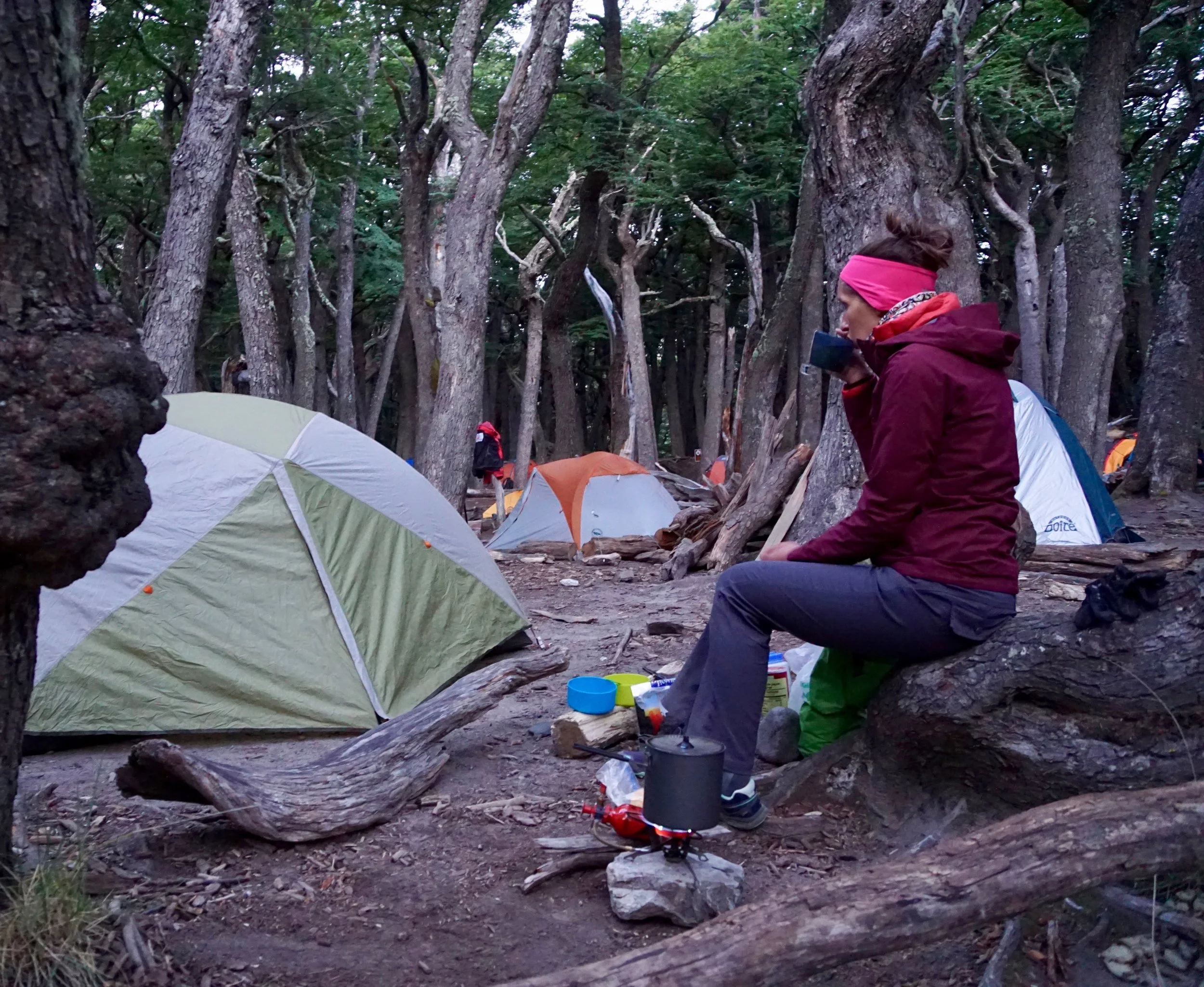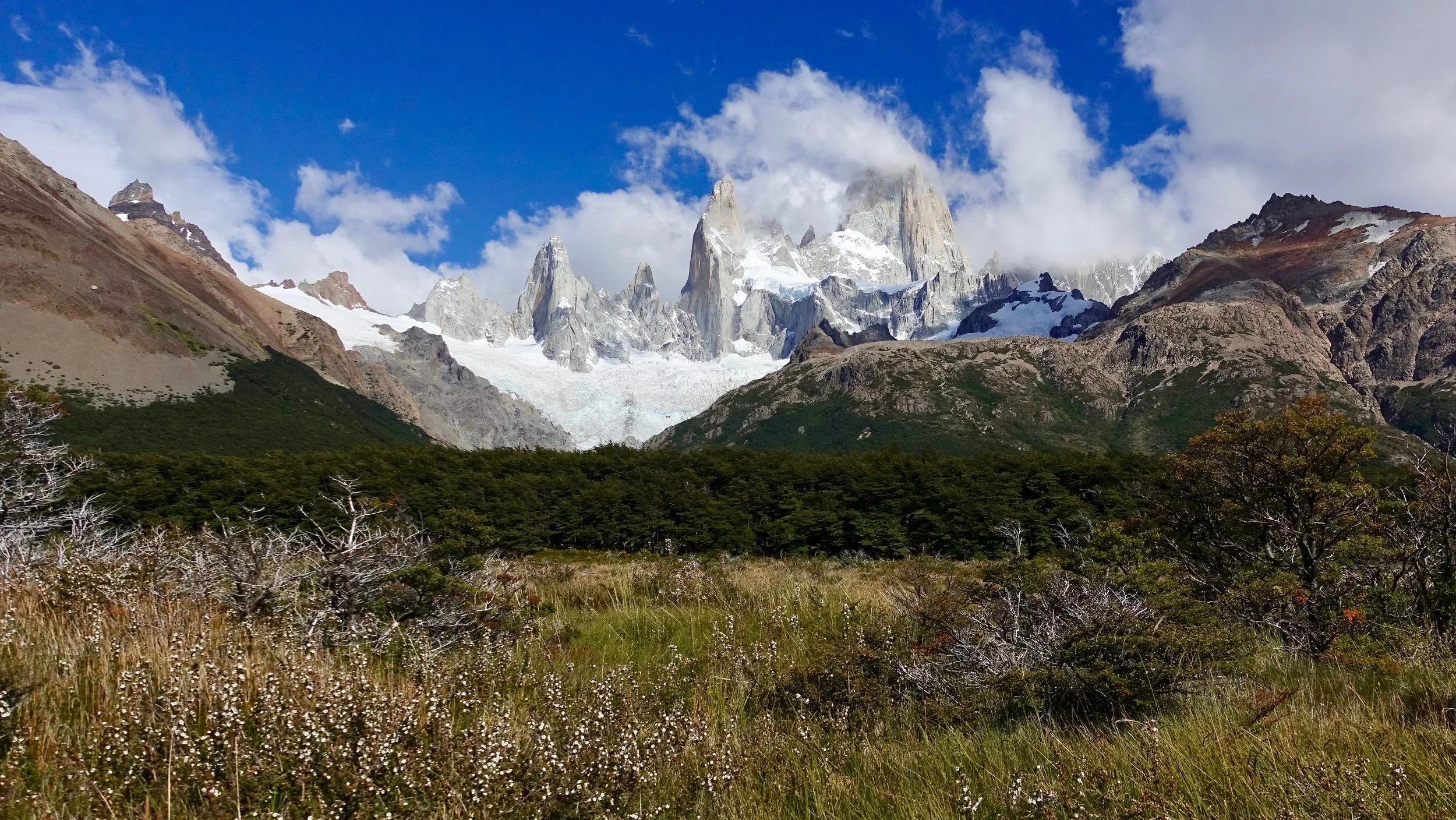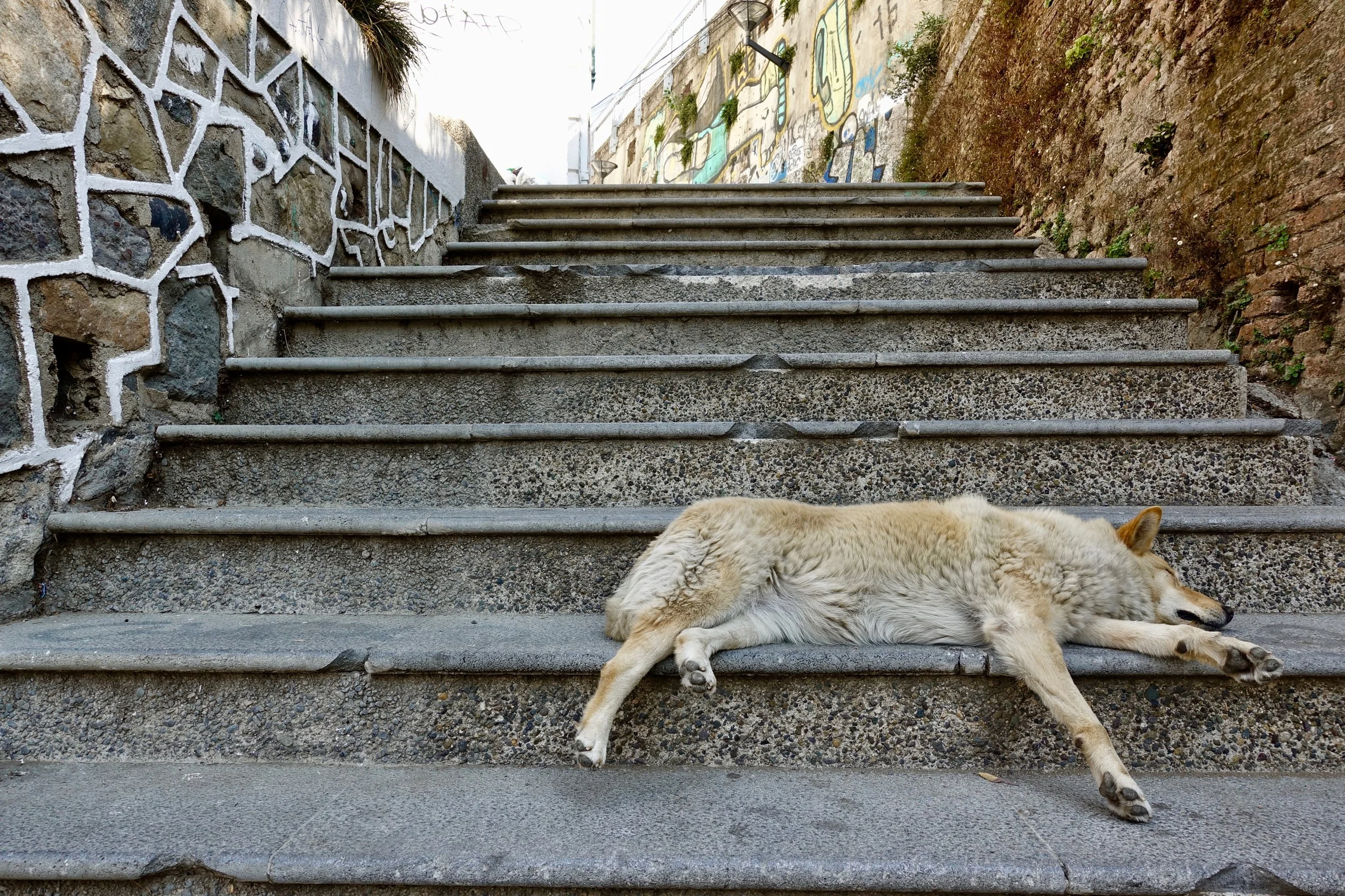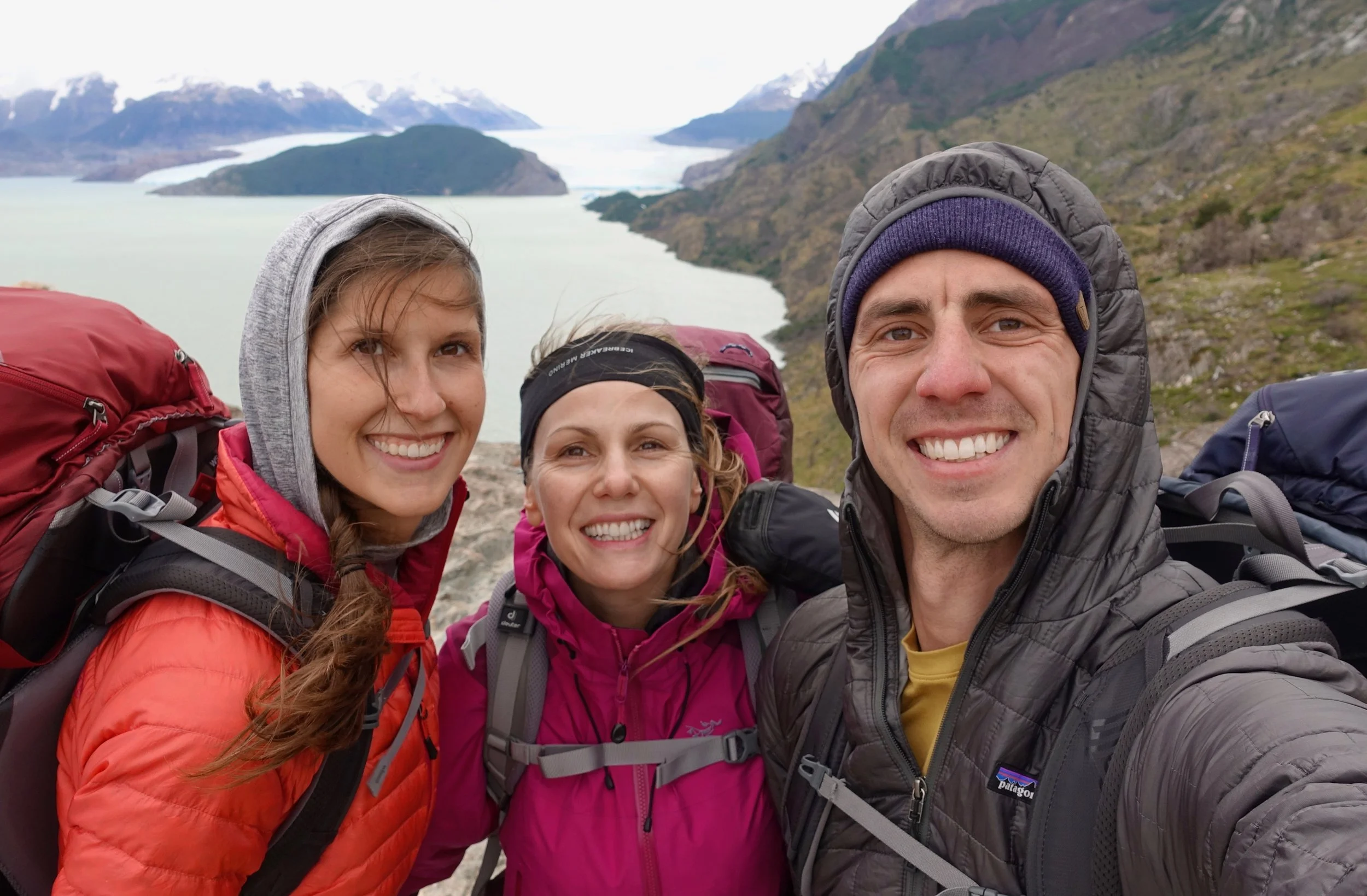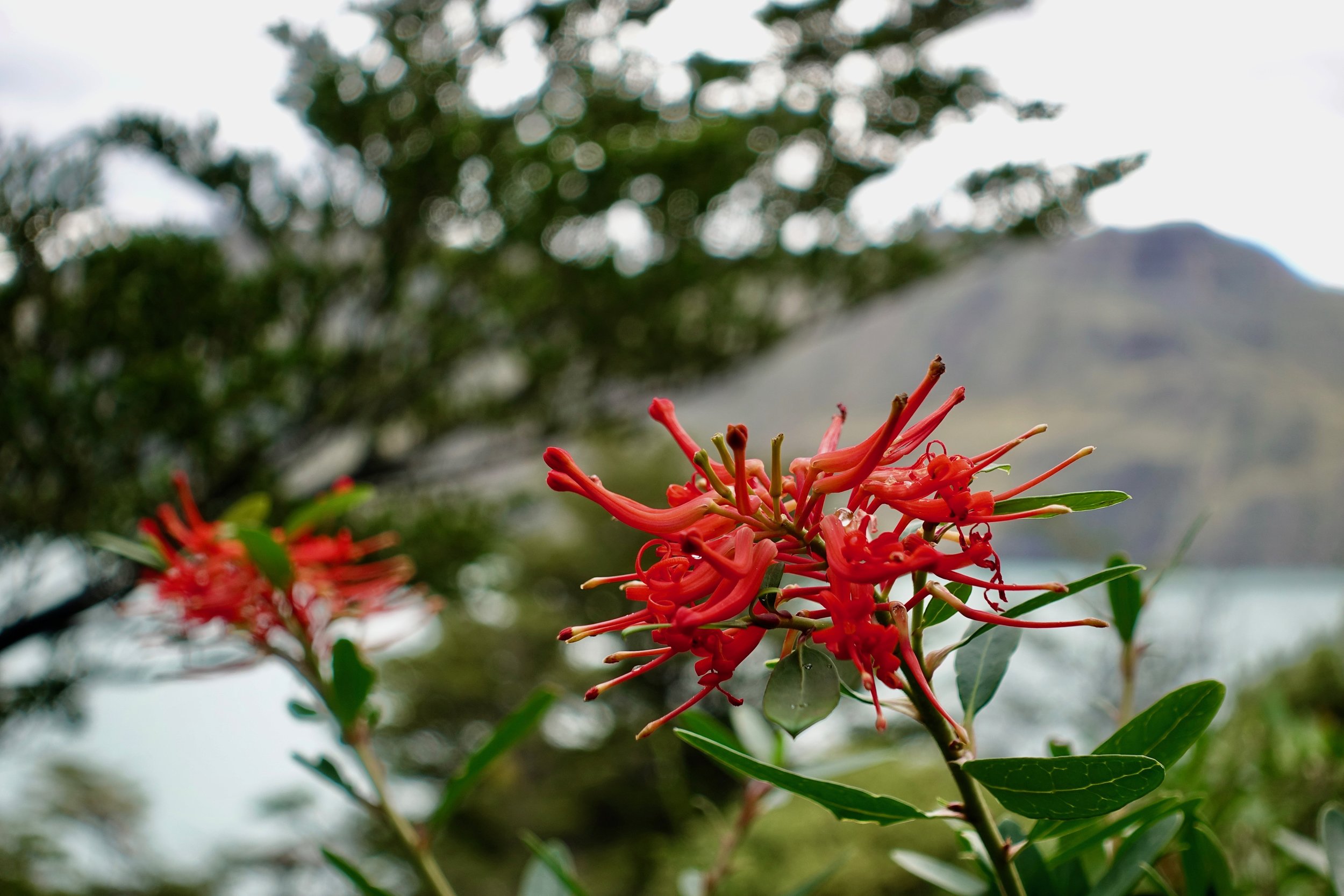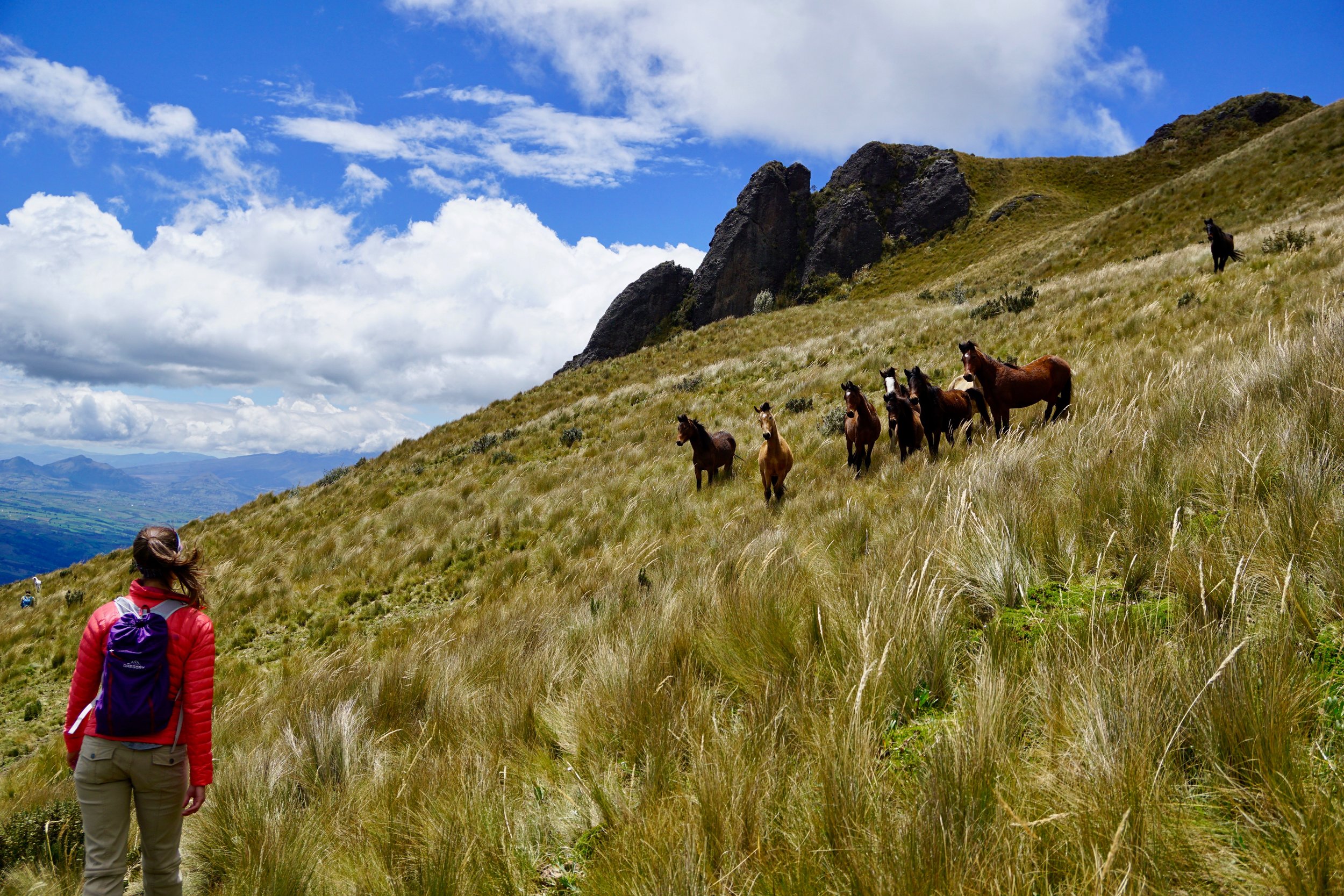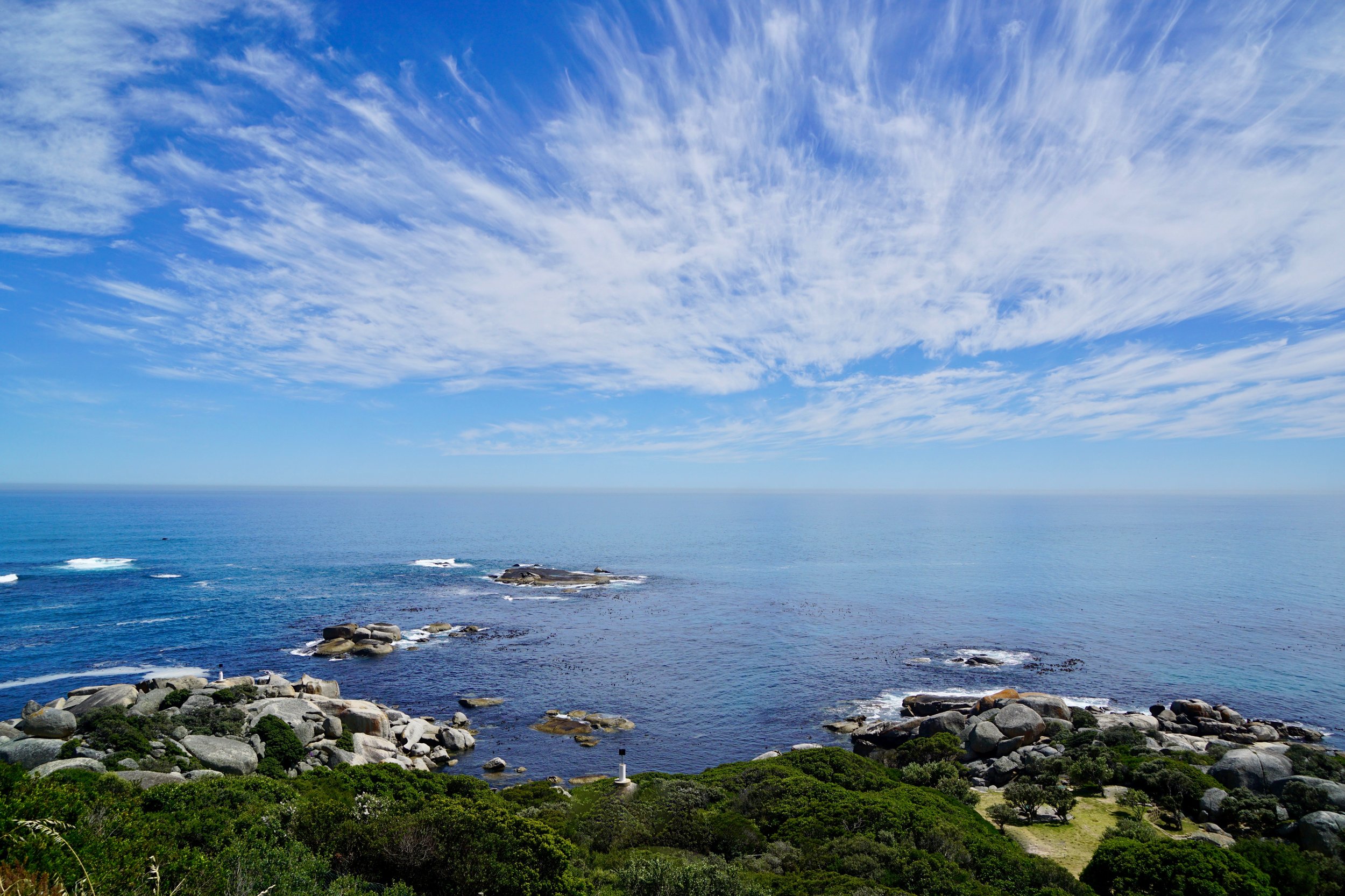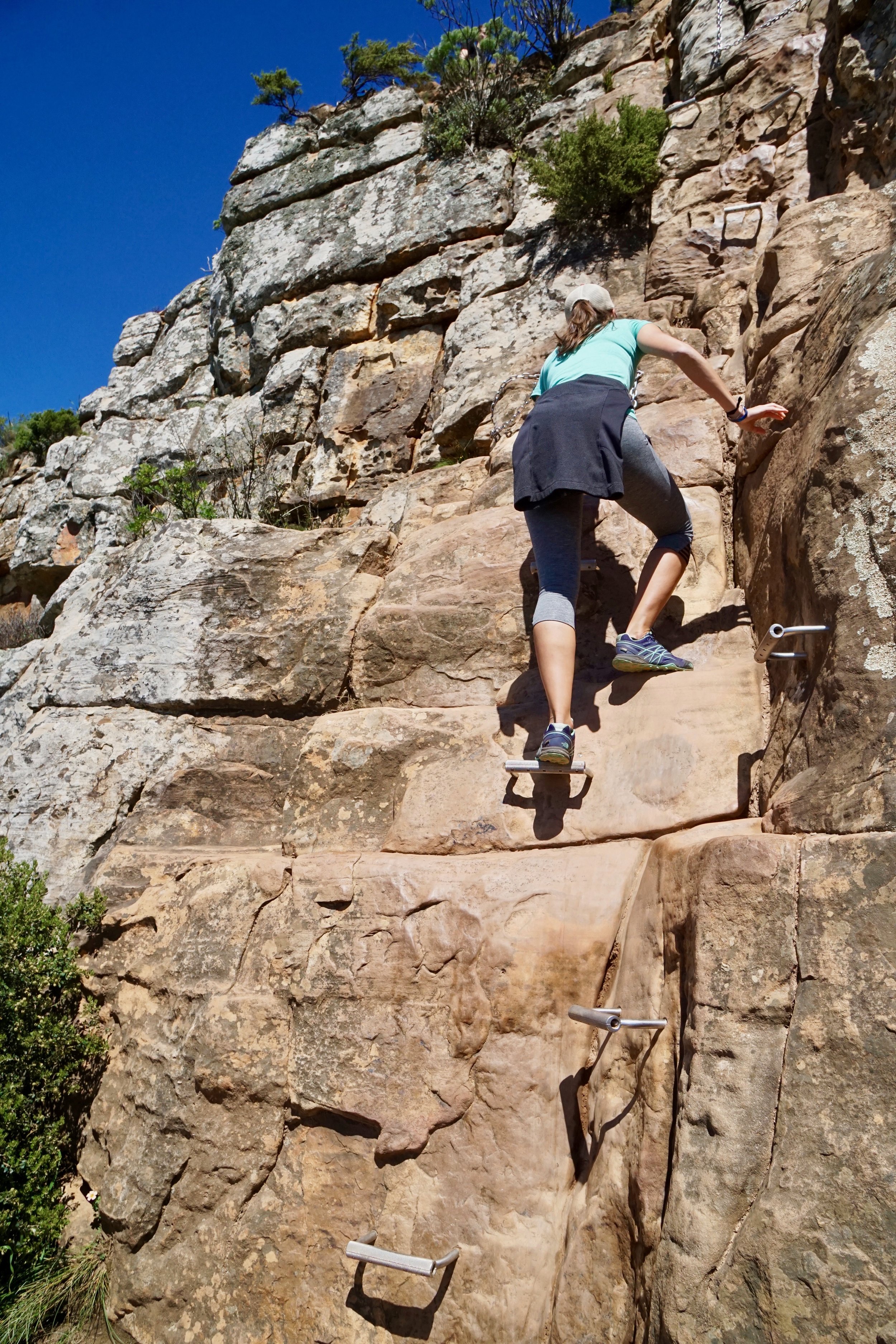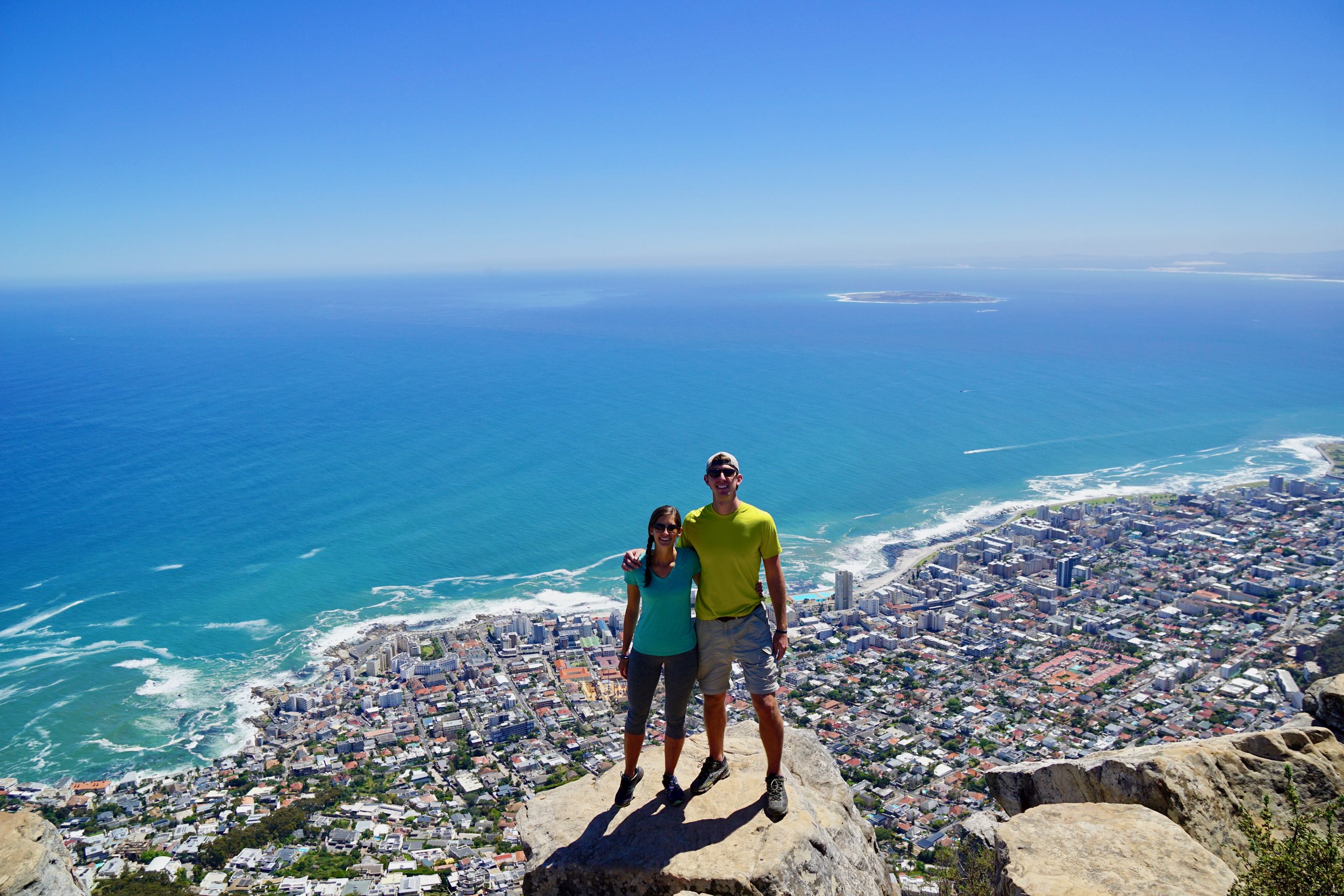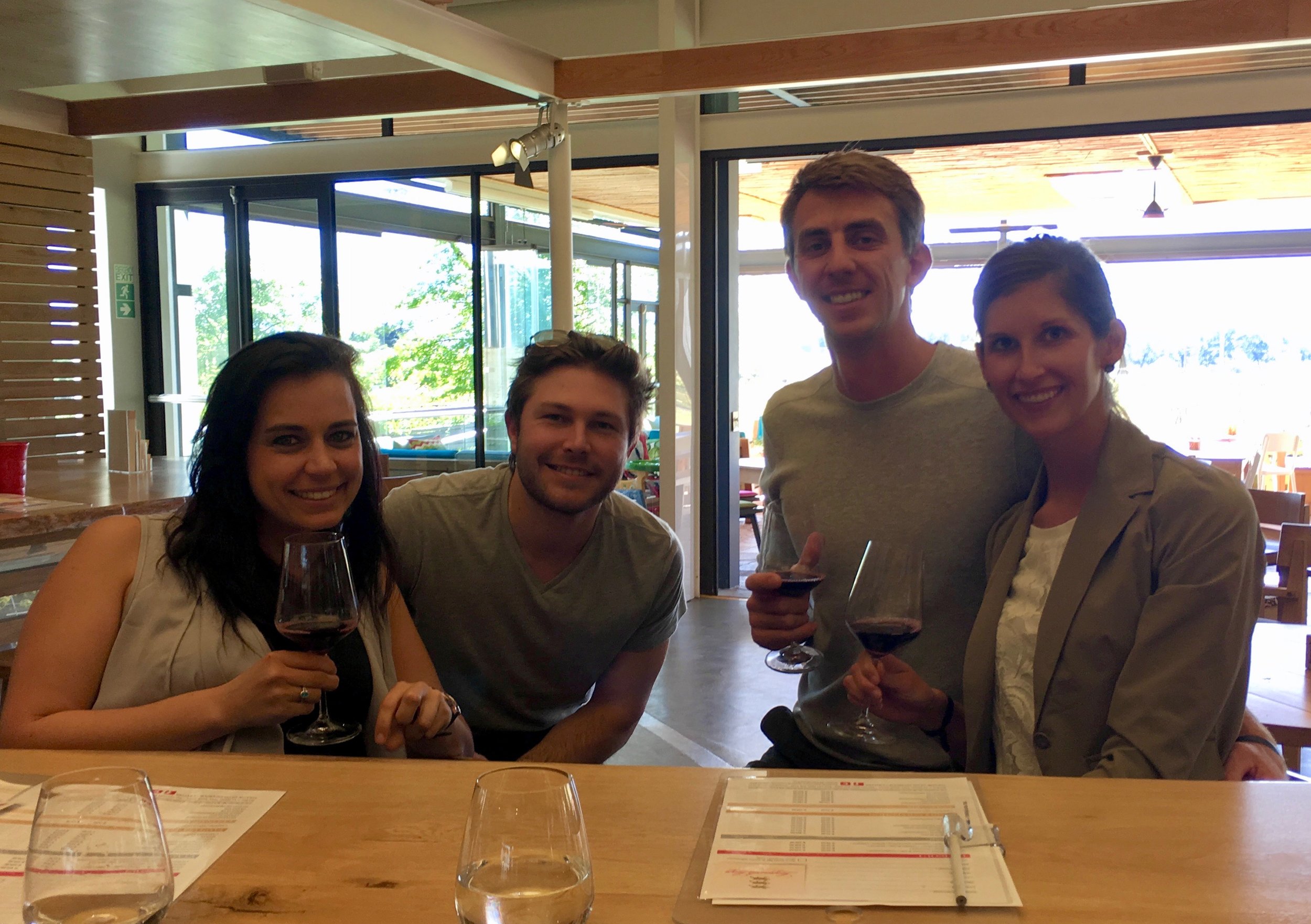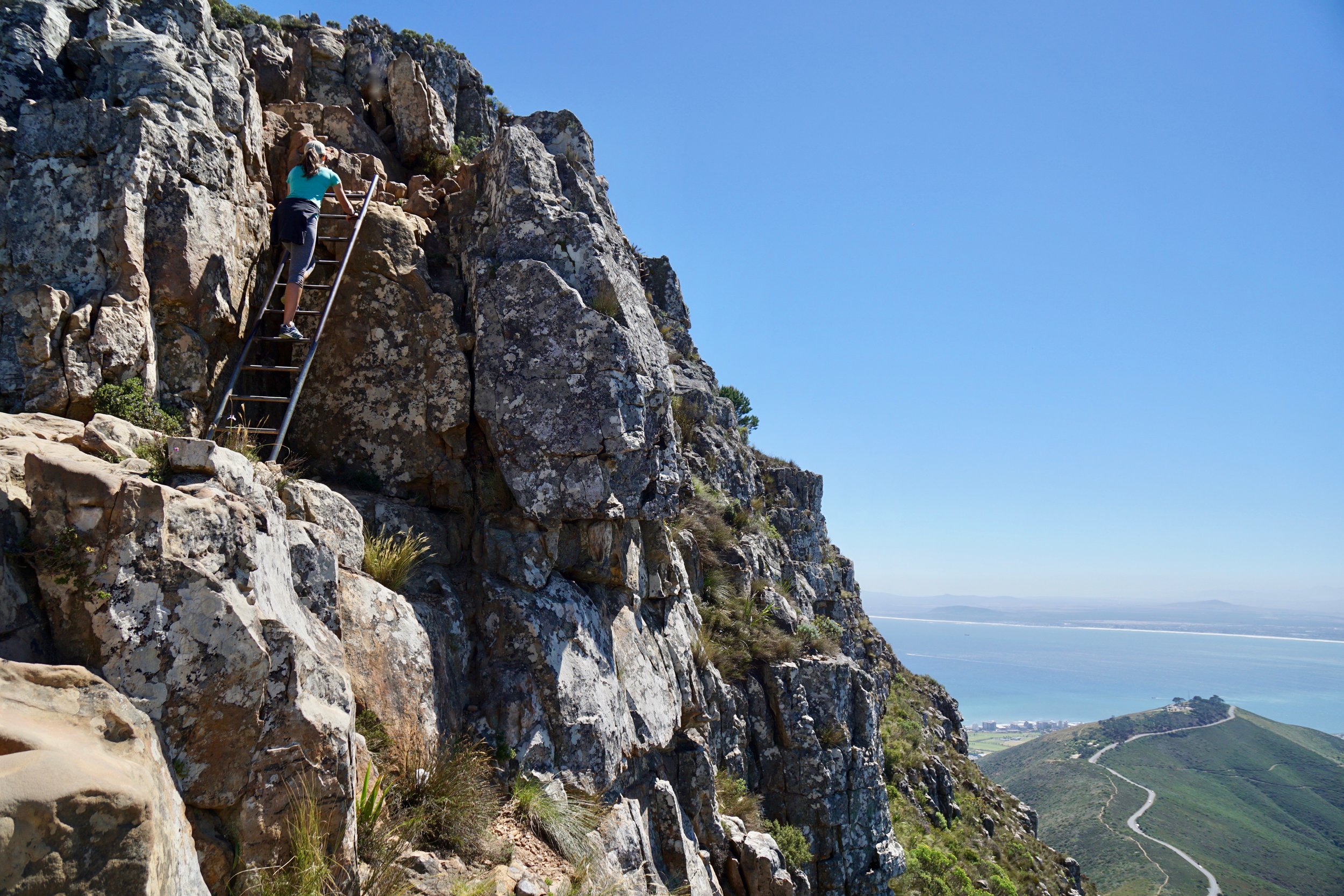Once on the trail, we quickly started to experience things that online research had prepared us for: 1) When you approach a wall of carved stones in the middle of the trail, that’s a “Mani wall” and should be passed to the left. 2) When you see a colorful drum with bright paintings and mantras--Mani wheel---spin it clockwise. And lastly, 3) When faced with a yak, horse, or creature bigger than you, stand on the hillside of the trail, not the cliff side.
Along the way, we slowly passed porters carrying large loads up the mountain. Kids no older than twelve were carrying massive loads of toilet paper and lighter weight provisions while grown men were carrying cases upon cases of drinks and canned goods. Some loads were well over 100lbs.
Coming the other direction on the trail were small and large groups of people heading back to Lukla; most looked exhausted and as if they hadn’t showered for more than a week. We assumed they had been in the mountains for as long as we planned to be and wondered if the look they were wearing was guaranteed for us in the future.
Our first day was fairly straightforward. Three hours of [net] downhill hiking from Lukla to a village named Phakding where we’d have lunch and if we were feeling strong, would continue on for another three hours to the village of Monjo.
We arrived in Phakding in good time and found a lodge for lunch. I order the "dal bhat" and Kimberly ordered a soup and sandwich. Dal (lentils) Bhat (rice) is a staple in Nepal and will be our main dish while here in the Himalayas. All dal bhat is served with a side of vegetable or meat curry. An important fact on the mountain, however, is that most lodges are powered by solar electricity. This means that there is limited refrigeration which in turn means that any meat above the village of Lukla was slowly carried up on a porter’s back. As a result, it will to be a ‘vegetarian only’ diet for us for the next two weeks. As a bonus though, there are refills on dal bhat so you never leave hungry.
The trail to the village of Monjo was rolling and uneventful; equal parts up and down with the occasional porter or herd of yaks to avoid. About an hour after lunch, it started to rain. Luckily, we were near the village of Bengkar, so we decided to wait out the storm in a quiet and colorful teahouse. Some journaling, a quick power nap, and a $3.50 soda passed the time until the rain subsided.
When we arrived in Monjo, a lot of the unknown and anxiety of the first day quickly went away. We were three hours “ahead” of our proposed itinerary and we felt strong and healthy. Walking through Monjo, we used our new method for finding a good place to stay--a method honed by our experience hiking in Annapurna: 1) Smoke is coming from the kitchen chimney and 2) other trekkers are warming themselves by the central wood stove. Simple but effective.
Day Two - Monjo to Namche Bazaar
After a great night’s rest, we shared a bowl of porridge and two boiled eggs for breakfast. During our meal, we met two older gentlemen hiking together, one of whom was from South Africa, so we had a lengthy chat about his country and our time enjoyed there.
In no rush, we packed up our bags and set off for our three-hour hike to our next overnight village, Namche Bazaar. As we followed the trail, we ran along a river before coming to a fork in the road. At the fork, the left trail went low and followed the river and the right headed seemingly parallel but uphill. I consulted our Maps.Me offline app and discover both in fact run parallel and end at the same place. Kimberly wanted the uphill option because there was a faint, spray-painted arrow on a rock nearby directing her that way. I argued for the along-the-river route for it’s scenery and seemingly more flat approach. As we take the lower, we start to run into heavy traffic coming in the opposite direction and Kimberly pointed out that her arrow back at the fork might have been for traffic control. I point out the dozen or so porters also going our direction. The argument is dropped as we realize conserving breath as the air thins is more important.



















